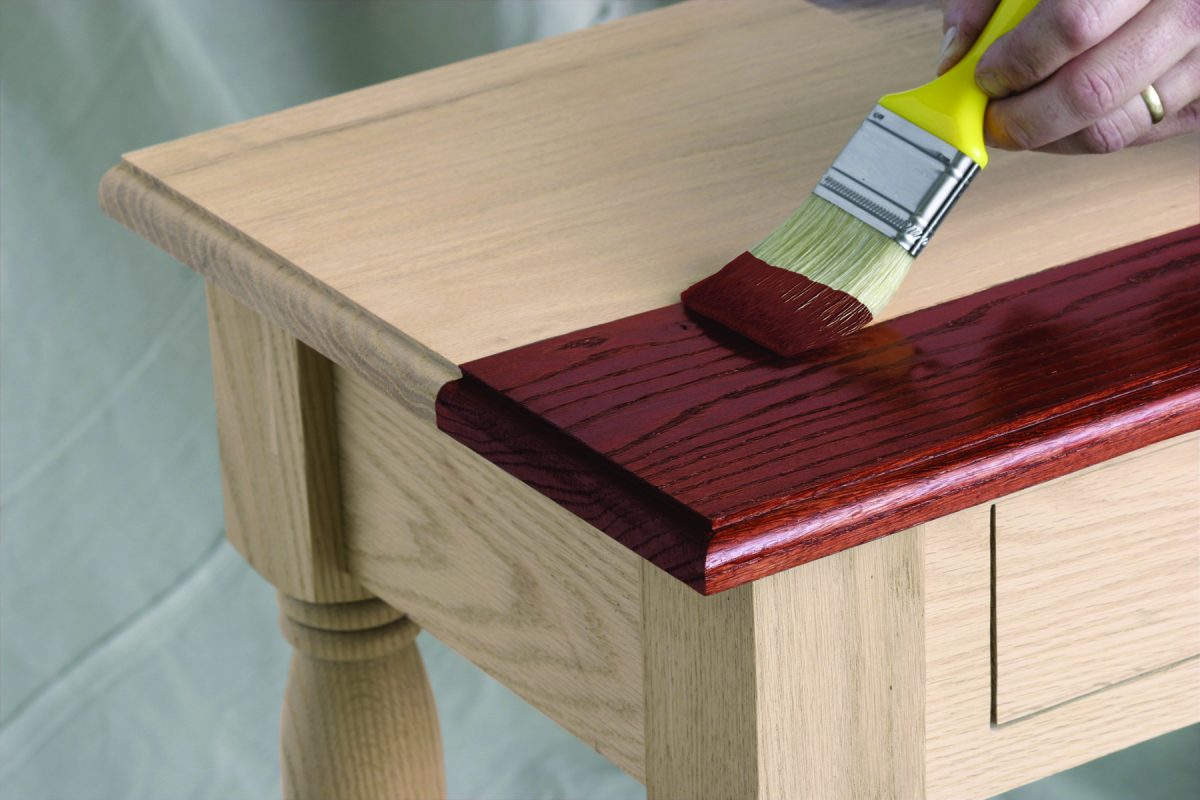Transforming the appearance of your interior spaces can be a rewarding project, allowing you to breathe new life into various elements of your decor. Whether you are looking to refresh existing features or embark on a new venture, focusing on enhancements can lead to striking results that elevate the aesthetic of your environment. Mastering the art of enhancement can be the key to achieving the look you desire.
Properly executed, these techniques not only enhance the visual appeal but also protect and prolong the lifespan of your accents. Understanding the nuances of preparation, application, and finishing processes can make a significant difference in the overall outcome. By approaching the task with care and knowledge, you can create an effect that is both captivating and lasting.
As you delve into the specifics, you’ll discover that various methodologies and treatments can yield distinct results. Experimenting with different products and techniques provides an opportunity to express your personal style while ensuring that the final appearance aligns with your vision. With careful planning and execution, your accents can become standout features that draw admiration.
Choosing the Right Stain for Wood
Selecting the appropriate hue for your timber can dramatically enhance its character and highlight its natural beauty. Understanding the different options and how they interact with various types of grain is essential for achieving the desired effect. Whether you’re looking for a bold color or a subtle tone, the choice you make will greatly influence the overall appearance of the project.
Types of Stains
There are several categories available, each offering unique finishes and characteristics. Below is a comparative overview to assist in making an informed decision:
|
Type |
Description |
Best For |
|---|---|---|
|
Oil-Based |
Rich color, durable finish, takes longer to dry. |
High-traffic areas, outdoor applications. |
|
Water-Based |
Quick drying, easy clean-up, less odor. |
Indoor use, projects requiring multiple coats quickly. |
|
Gel |
Thick consistency, good for vertical surfaces. |
Uneven grains, intricate designs. |
|
Lacquer |
Fast-drying, high-gloss finish, great durability. |
Professional finishes, detailed cabinetry. |
Color Selection and Testing
When it comes to selecting a shade, consider the existing palette of your space and the style you aim to achieve. Always test the chosen color on a small, inconspicuous area before committing to the entire surface. This allows for adjustments based on how the stain interacts with the natural characteristics of the timber, ensuring that the end result aligns perfectly with your vision.
Preparing Your Wood for Staining
Before applying any coloration to your surface, it’s crucial to ensure that the material is adequately prepared. This preliminary process can greatly influence the final outcome, allowing the pigment to adhere properly and showcase the natural beauty of your surface. Taking the time to prepare effectively will result in a more even tone and a longer-lasting finish.
Cleaning and Sanding the Surface
The initial step involves thoroughly cleaning the material to remove any dust, grease, or previous coatings. Use a mild detergent solution and a soft cloth to wipe the surface. Allow it to dry completely before proceeding to the next phase.
Sanding is essential to create a smooth canvas for coloration. Use fine-grit sandpaper, starting with a grit of around 120 and then moving to 220. This will help eliminate imperfections and open up the surface, making it receptive to tones. Always sand in the direction of the grain to avoid scratches that may be visible through the finish.
Conditioning the Surface
Applying a pre-treatment is often beneficial, especially for porous materials that tend to absorb pigments unevenly. Consider using a wood conditioner that will help to balance the absorption and enhance the overall appearance. After applying the conditioner, wait the recommended time before adding any color to ensure optimal results.
Remember that a well-prepared surface sets the foundation for an exquisite end result. Take these steps seriously, as they are integral to the overall success of your project.
Application Techniques for a Smooth Finish
Achieving a flawless surface requires careful selection of methods and materials. Utilizing the right approach enhances the overall appearance and durability of the project. Several effective techniques can be applied to ensure an even coat and an attractive outcome.
Preparation is Key
Prior to application, it is crucial to adequately prepare the surface. This step sets the foundation for success. Follow these guidelines:
-
Clean the surface thoroughly to remove dust and grease.
-
Sand the area with fine-grit paper to create a smooth base.
-
Remove any dust particles using a damp cloth or vacuum.
Application Methods
Once the surface is ready, different techniques can be employed for applying the finishing product. Each method offers unique advantages:
-
Brush Application: Ideal for achieving detailed coverage, a high-quality brush allows for more control and precision.
-
Spray Technique: Provides a uniform and fine finish, great for larger areas, but requires practice to master.
-
Wipe-on Method: Using a cloth to apply product gives a more informal finish, perfect for smaller projects or touch-ups.
Regardless of the chosen technique, ensuring consistent pressure and even strokes will contribute to a superior final result. Experimentation can also yield beneficial insights, so don’t hesitate to try various methods to find what works best for your specific tasks. Remember, patience during application leads to a remarkable transformation.
Tips for Achieving Even Color Distribution
Achieving a consistent hue across your timber surfaces can enhance their aesthetic appeal and make them more visually pleasing. The process requires attention to detail and a few essential techniques to ensure uniformity throughout the application. Below are key practices to consider for maintaining an even appearance in your projects.
-
Preparation is Key: Ensure all surfaces are properly sanded and free from dust or residues, which can interfere with color absorption.
-
Testing in Advance: Always experiment on a scrap piece first. This allows you to observe how the material reacts to the product and make adjustments as necessary.
-
Apply Even Coats: Use a consistent method of application, such as brushes or cloths, and strive for an even distribution during the initial coating.
-
Work in Sections: Divide larger areas into manageable sections. Completeness in smaller areas helps avoid lap marks and inconsistencies.
-
Monitor Drying Time: Pay close attention to drying intervals. Overly dry or tacky surfaces can lead to variation in color; follow manufacturer instructions closely.
-
Use the Right Tools: High-quality applicators and pads can make a significant difference in color application and help achieve smoother results.
-
Blend Edges: Feather out the edges of each section to minimize visible transitions between coats, ensuring a seamless finish.
By incorporating these strategies, you will be better equipped to create a visually coherent appearance that highlights the natural beauty of the material.
Sealing and Protecting Stained Wood
Ensuring the longevity and beauty of a dyed surface involves implementing proper protective measures. These techniques safeguard against everyday wear and environmental factors, allowing the natural aesthetics to shine through. An effective sealing process not only enhances durability but also can elevate the overall appearance of the crafted pieces.
Choosing the Right Finish
Selecting the appropriate product for sealing is crucial. There are various options available, each offering distinct benefits. Consider factors such as the desired sheen, application method, and compatibility with the stain used. Here’s a comparison of common types:
|
Finish Type |
Description |
Best Use |
|---|---|---|
|
Polyurethane |
A durable synthetic coating that provides excellent protection. |
High-traffic areas, surfaces exposed to moisture. |
|
Lacquer |
A fast-drying finish that offers a hard protective layer. |
Furniture items, decorative pieces. |
|
Varnish |
A traditional finish that provides a warm glow, suitable for outdoor use. |
Outdoors, areas needing UV protection. |
|
Wax |
A natural finish that offers a soft, subtle sheen. |
Low-traffic surfaces, decorative items. |
Application Process
The application method can significantly impact the final outcome. Ensure that the surface is clean and free of dust before proceeding. Follow the manufacturer’s instructions for the best results. Using a high-quality brush or applicator can lead to a smooth, even finish. Multiple thin coats are generally recommended over a single thick coat, allowing for better adhesion and a more professional appearance.
Maintenance Practices for Longevity
Ensuring a prolonged lifespan and preserving the elegance of your interior accents requires consistent care and attention. Simple routines can significantly enhance durability, keeping these elements looking pristine and functioning optimally. By implementing effective maintenance strategies, you safeguard your investments and maintain the visual appeal of your living space.
Regular Cleaning
Routine cleaning is fundamental in preventing the accumulation of dust and debris, which can dull finishes and deteriorate surfaces over time. Utilize a soft, lint-free cloth for dusting, and when necessary, employ mild soapy water to gently remove stains. Always dry the area thoroughly to prevent moisture damage.
Periodic Inspections
Conducting periodic evaluations of your accents allows you to identify early signs of wear or damage. Look for scratches, dents, or discoloration and address these issues promptly to prevent further deterioration. Besides, consider applying a protective layer, such as a wax or sealant, to enhance resilience against everyday wear and tear.
Q&A: Home furniture staining wood trim
What is the best type of stain to use on wood trim?
The best type of stain for wood trim often depends on the type of wood and the desired finish. Oil-based stains are popular for their deep penetration and rich colors, while water-based stains are favored for their quicker drying time and lower odor. It’s important to test a small area first to see how the stain reacts with your specific wood type. Additionally, consider whether an opaque finish or a translucent stain better complements your overall decor.
How can I prepare my wood trim for staining to achieve a professional finish?
Preparing your wood trim before staining is crucial for achieving a professional-looking finish. Start by cleaning the wood surface thoroughly to remove dust, dirt, and any existing finishes. Sand the trim lightly using a fine-grit sandpaper to create a smooth surface and improve stain adhesion. Make sure to wipe away any dust created during sanding with a tack cloth. If your trim is particularly rough or has blemishes, you may also want to apply a wood conditioner to ensure an even stain application and to prevent blotchiness, especially on softwoods like pine.
How long should I wait between applying coats of stain?
The waiting time between applying coats of stain can vary based on several factors, including the type of stain used and the environmental conditions. Generally, it is recommended to wait at least 4-6 hours before applying a second coat of oil-based stain. For water-based stains, you may be able to apply a second coat in as little as 1-2 hours, but it’s always best to refer to the manufacturer’s instructions for specific guidance. Additionally, ensure that the first coat is fully dry to the touch and that the temperature and humidity levels in the room are conducive to drying.
Can I stain over painted wood trim, and what is the process?
Yes, you can stain over painted wood trim, but it requires careful preparation. First, you should remove any existing paint completely, as staining over paint can lead to an uneven finish. This can be done using a paint stripper or by sanding the surface down to the bare wood. After removing the paint, clean the wood thoroughly to eliminate dust and debris, and then follow the usual preparation steps, including sanding and potentially applying a wood conditioner if you’re working with a softwood. Once ready, you can apply your chosen stain for a fresh new look.
How should you prepare unfinished wood before applying wood stain?
Before applying wood stain to unfinished wood, it’s essential to sand the wood surface to remove any imperfections and raise the grain. Applying a pre-stain wood conditioner helps the stain penetrate evenly, preventing blotches on the surface of the wood. This step ensures that the beauty of the wood grain is highlighted during the staining process.
What is the best method to apply wood stain and ensure an even finish?
When applying wood stain, use a staining pad or brush, and apply the stain in the direction of the wood grain. Let the stain seep into the wood for a few minutes, then wipe off the excess stain with a clean cloth to avoid blotches. For a darker wood tone, apply multiple coats, allowing the wood to dry between each coat.
Can you paint over stained wood, and how should you prepare it?
Yes, you can paint over stained wood, but the surface must be properly prepared. Sand the stained surface lightly to remove the glossy finish and allow the paint to adhere better. Clean the surface with mineral spirits to remove any remaining dust or oils, then apply a primer before painting over the stained wood for a smooth finish.
What are the benefits of using gel stains on wood furniture?
Gel stains are thick and easy to apply, making them ideal for vertical surfaces like wood doors and furniture. They don’t seep into the wood as much as traditional stains, allowing for better control of the stain color and minimizing drips. Gel stains are perfect for refinishing existing wood furniture, as they provide an even coat over the surface.
How long should you let the stain dry before applying a topcoat?
After applying the stain, it’s important to let the stain dry completely before applying a topcoat. Depending on the stain type and the wood species, this can take anywhere from 24 to 48 hours. Applying a topcoat, such as polyurethane, will protect the wood and enhance the beauty of the stained wood finish.





